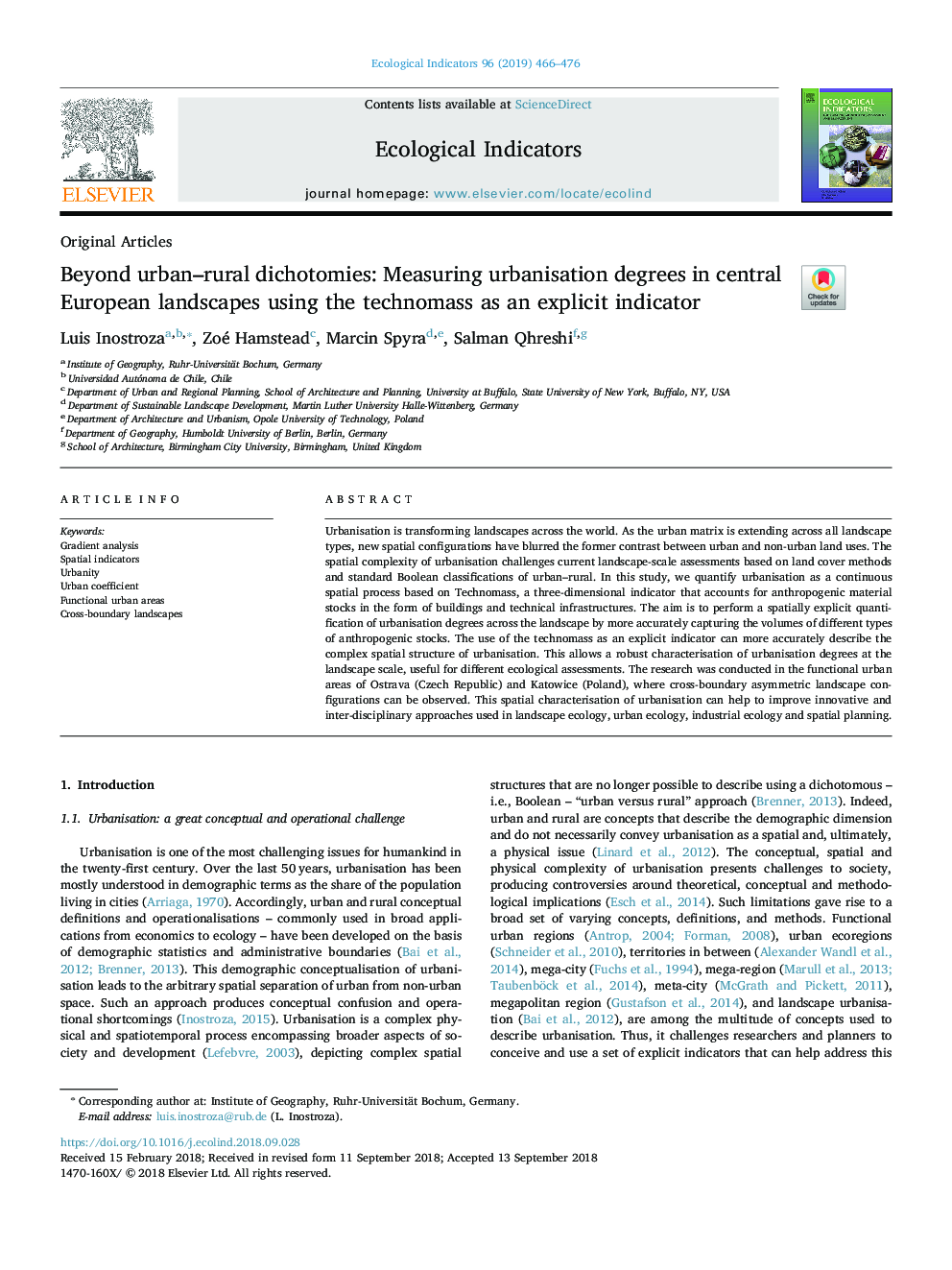| Article ID | Journal | Published Year | Pages | File Type |
|---|---|---|---|---|
| 10144277 | Ecological Indicators | 2019 | 11 Pages |
Abstract
Urbanisation is transforming landscapes across the world. As the urban matrix is extending across all landscape types, new spatial configurations have blurred the former contrast between urban and non-urban land uses. The spatial complexity of urbanisation challenges current landscape-scale assessments based on land cover methods and standard Boolean classifications of urban-rural. In this study, we quantify urbanisation as a continuous spatial process based on Technomass, a three-dimensional indicator that accounts for anthropogenic material stocks in the form of buildings and technical infrastructures. The aim is to perform a spatially explicit quantification of urbanisation degrees across the landscape by more accurately capturing the volumes of different types of anthropogenic stocks. The use of the technomass as an explicit indicator can more accurately describe the complex spatial structure of urbanisation. This allows a robust characterisation of urbanisation degrees at the landscape scale, useful for different ecological assessments. The research was conducted in the functional urban areas of Ostrava (Czech Republic) and Katowice (Poland), where cross-boundary asymmetric landscape configurations can be observed. This spatial characterisation of urbanisation can help to improve innovative and inter-disciplinary approaches used in landscape ecology, urban ecology, industrial ecology and spatial planning.
Related Topics
Life Sciences
Agricultural and Biological Sciences
Ecology, Evolution, Behavior and Systematics
Authors
Luis Inostroza, Zoé Hamstead, Marcin Spyra, Salman Qhreshi,
